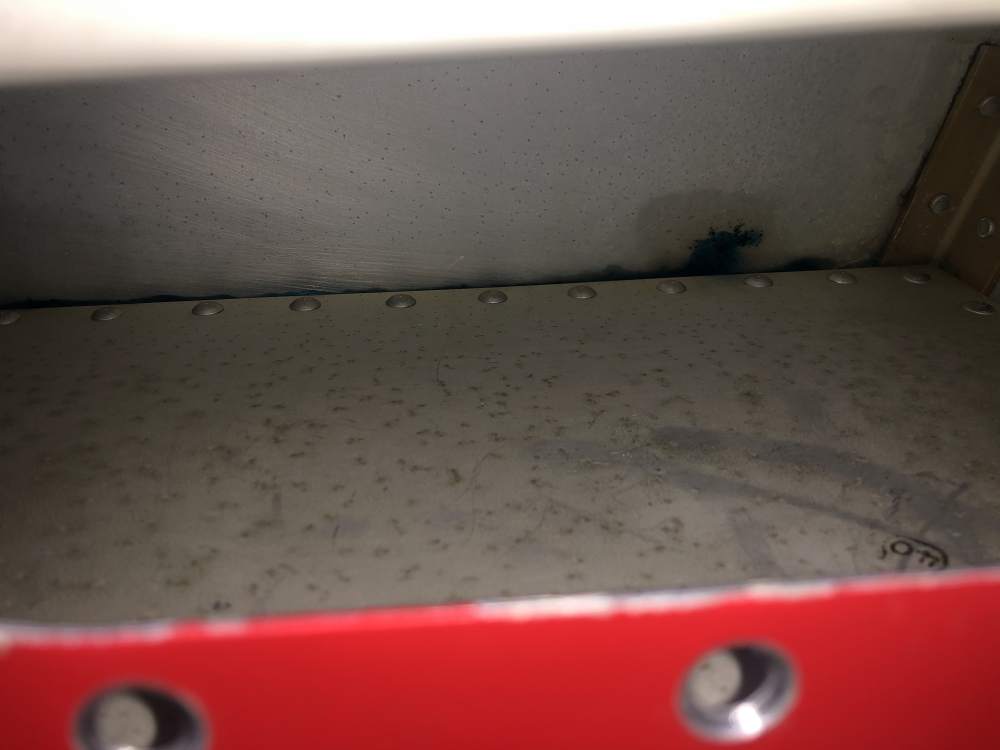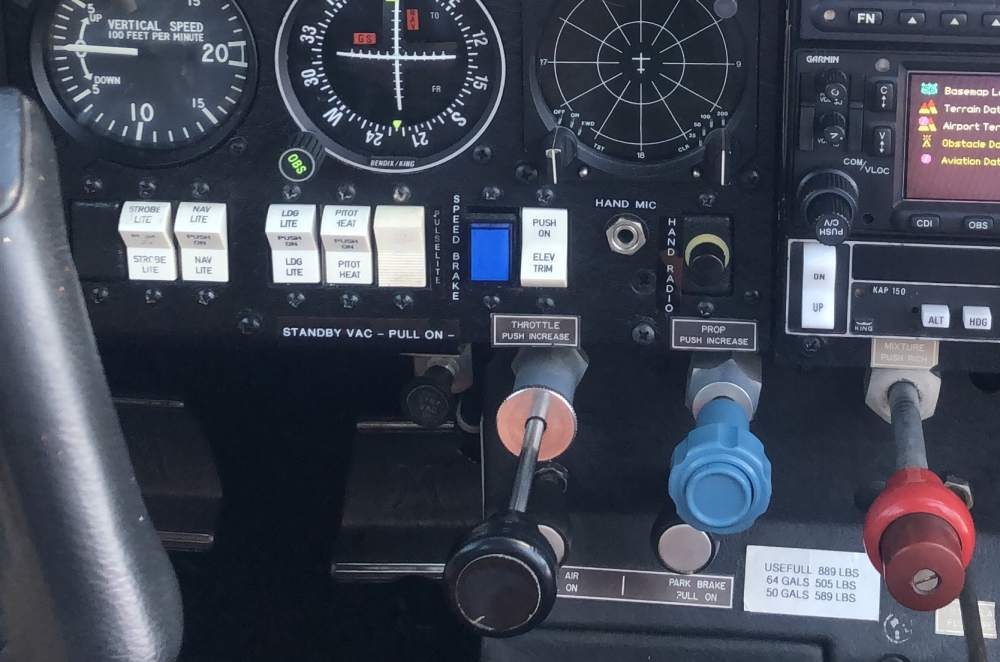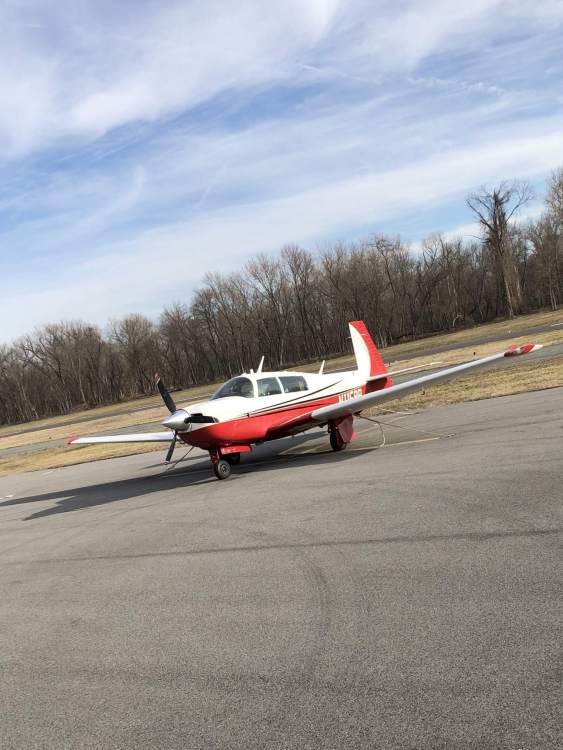
Matt M
Basic Member-
Posts
58 -
Joined
-
Last visited
Content Type
Profiles
Forums
Blogs
Gallery
Downloads
Media Demo
Events
Everything posted by Matt M
-
Here is the complete picture. The two samples to the right of the average column need to be swapped. I sent in two samples at once as and they swapped them. It should have been 4/27/20 and they thought it was 4/27/21. Matt
-
I just got my oil analysis results back from blackstone. Aluminum, Chromium, and iron all up significantly. My aluminum, chromium, iron, and lead have been elevated since I started doing the analysis. I started at 84 hours since Lycoming factory overhaul, 168 hours on it now. I bought the aircraft after the engine was already broken in. Blackstone attributed the initial higher levels with cylinder break-in. They are recommending borescope and compression check. My compressions at annual in September were 77/78/78/77. Engine is running strong. I haven’t needed to add any oil since at all yet since I bought it. Thoughts? Matt
-
1983 M20J with KAP150 - electric trim switch part#?
Matt M replied to Adi's topic in Modern Mooney Discussion
Mike, I’m interested in the yoke trim switch. Can you contact me? Matt -
Any more info on this? My trim switch is giving me some problems on my KAP-150. About a month ago would pitch up fine, down only if you pushed the buttons hard. Took it apart, sprayed some contact cleaner in it and I thought it was resolved. Today it was giving me trouble again. Autopilot worked fine, passed test and held altitude no problem. I looked around the forums for the micro switch thread, but couldn’t find anything. Matt
-
Turned out to be the fuel cap. I found a small blue trail leading from the back of the cap. There was a little play in the cap which caused a small gap toward the rear of the cap. When I topped the tanks the negative pressure sucked the fuel out. Once the fuel dropped a bit no more smell. New o rings and tightening up the caps resolved the problem.
-
That was my post. Turns out it was the o-ring on the fuel cap and some play in one of the caps. When the tanks were topped the negative pressure over the wing was drawing fuel out. It vaporized and caused the smell. I could see a trace of blue aft of the one cap. Closer examination showed a bit of play. My mechanic put new o-rings on and tightened them up and problem has disappeared.
-
Actually now that you mentioned shoulder harnesses in the rear seats I actually have them. I haven’t had anyone in the rear seats other than them with their car seats so I never used the shoulder harnesses and tucked them behind the seats and forgot they were there.
-
Currently I have two lightweight car seats for my twin soon to be 5 year old boys just for the plane. They are starting to get to be too big for them as they are about 45 pounds. The next logical step is a booster seat. I am wondering what everyone else has done? I like having the seat belt harness that is part of the car seat. It keeps them secure. It seems most booster seats are designed to use the cars seat belts which would be just the lap belt in the rear on my plane. Seems like a booster seat would be useless as it is designed for kids to fit with a car three point belt. I don’t see any advantage to just sitting in the rear seat, but I would like more restraint protection other than the lap belt.
-
I believe all ATC facilities have ADS-B capabilities now. Your GNX-375 is a 1090ES transponder. ATC radar interrogate transponders for both altitude and your 3A code. The transponder sends these signals back to the radar. The ES portion of your transponder (ADS-B) sends an unsolicited message independent of the radar interrogation. This signal is received by ground stations, not the radar. The ground stations then send your position back to the radar facility where it is fused on the controllers display. If you had a bad connection on your coax the signal could have been weak and the radar would not not see your transponder reply The ADS-B signal may have been received by a ground station. The controller may have seen your ADS-B on the display , but it wasn’t fused with your radar track because the radar did not get your transponder reply. FlightAware uses their own ADS-B receivers independent of the ground stations the FAA uses. So if you saw yourself on FlightAware that doesn’t mean the FAA saw it. At lastly you still need Mode-C for TCAS to operate. The TCAS on bigger aircraft still rely on Mode C. The new TCAS standard is coming which will incorporate ADS-B data.
-
Wait is that what those two pedals are for? I have noticed it in straight climb outs before. I was climbing to the right this time. From breaking ground to about 500 AGL I had no smell until I made the initial turn. It was odd. Ball was centered . Seemed like it was from the left, but it's hard to directionally sniff around the plane and fly at the same time.
-
I'll have to check it out. I thought i found my issue with the seeping tank, but now I am wondering if that is it. I read the issue with the fuel injector. My smell goes away after about a minute which is about around the same time I reduce the MP to 26". Same scenario in the injector venting. It goes in for annual next month so they will have it all apart. Hopefully the root cause is found.
-
Does anyone know what is the typical success rate and difficuly of a repair on the top forward part of the tank is?
-
I replaced those first since that was quick and easy. It's definitely coming out of the top seem on the forward part of the tank. I was just wondering whether my mechanics idea to place sealant on the outside of the tank is really going to do anything.
-
So I have been chasing a fuel smell in my cabin for about 4 months now. It only happens on climb out and goes away in about a minute. I keep my tanks topped off after every flight. When I climb in the airplane no smell of fuel at all just old airplane. I thought I fixed the problem a few weeks ago when I had the fuel pickup tube gasket replaced as it was a little wet around it and had blue staining. Well the last two flights after smell still occurs. It doesn’t happen on subsequent takeoffs which makes me believe that once some fuel burns off the leak stops. Anyhow today I’m climb out no smell at all, until I make a right turn in the climb. So I thought it must be coming from the left side. I switched to the right tank after 15 min or so I am 3 below full on each side at my destination airport. The next takeoff no smell at all. I go back to my home airport and top off the right and leave the left 3 low. Takeoff again and smell occurs on right climbing turn. I start smelling around and determined it seemed to be stronger toward the right side of cabin. When I landed I pulled off inspection plate under wing leading edge closest to cabin and saw staining on forward part of the tank at the seem where it meets the upper wing skin. It's a 82J with original sealant. It had a repair job about 2 years ago. Different area though. I showed the photo to my mechanic and he thought maybe instead of opening the tank and patching the inside it may be possible to patch on the outside. I am not sure I am too keen on this idea or whether it would even work. I know I probably require a new strip and seal in the future, but it would be nice to get maybe a couple more years. Besides this weep it is dry everywhere else. Thoughts? Also how many gallons low would the tank need to be to reach the top near this seem. It seems like 3 gallons and I have no smell so that is my guess? I think i could live with keeping it 3 low if it buys me more time. Matt
-
I flew it many times in a rented Cessna, although I don't think I would do it now in my older age in my Mooney. Maybe somebody else's. Several years back I hitched a ride with the Coast Guard in an HH-65 and did the river tour. We approached the statue and there were several tour helicopters orbiting above. We dropped down to no more than 100 ft off the water and did our orbit. That was quite an experience. Matt
-
I probably crossed paths with you, topping off the M20C. I worked there Sundays. It was definitely an experience. I stopped in there a few months ago. Place is the same, but with many difference faces.
-
I didn’t realize your home airport was 39N. I worked there back in 2004-2005 when I went to school at Rutgers. Were you based there back then?
-
Mine are Precise Flight Speed Brakes. From the install manual: “The SpeedBrake switch is activated ON to fully deploy and OFF to retract the SpeedBrakes. The annunciation indicates deployment when both SpeedBrake® units are deployed. A failure of a single cartridge drive unit will prevent the Annunciator light from illuminating.”
-
I have electric ones on my J. I have a lighted button on the panel. Push to deploy, push again to retract. I am not sure why you would need an indicator light for each speedbrake. I think you would figure it out pretty quick if one didn’t deploy.
-
I was in the same predicament as you were. I have the full size iPad 6th Generation 9.7". I didn't want to buy a iPad mini, but didn't want to block the instrument panel. I did a bunch of research and bought some RAM parts to build mine. Mounting it underneath is the way to go. I also have a Otterbox Defender Rugged case on it so it is a bit bigger than no case at all. This is what I ended up with. You can see it doesn't block the view of my Aspen. Room for my hand is reduced because of the case on it, but I still have plenty of room to grip the yoke. It doesn't hit my knees at all either and I am 6' and like the seat high. Matt
-
I went up tonight to get my night currency. On climb out I noticed my fuel pressure was lower than normal and then noticed my oil pressure was barely in the green and cht and oil temp were abnormally high. I had this same problem a year ago which caused a deviation to another airport. The shop investigated and determined it to be the cannon plug connector. They sprayed some contact cleaner and all was well. I picked the plane up and everything was good to go. Well what I didn’t test last year when I picked it up was turning the panel lights on. I didn’t put two and two together at the time that the panel lights were the cause. I haven’t used them since then. All my flying was during the day. When I turned them off tonight the gauges returned to normal. Turning the panel light rheostat brighter causes them to fluctuate. Pressure gauges go down, temp gauges up. Turn the lights off and all is well. Thoughts? Bad ground connection on the back of cluster gauge assembly? I will troubleshoot by hooking a temp ground wire to the back of the cluster panel and see if I can replicate problem. Matt
-
That is the same thing that happened on my J. While flying just about sunset the oil pressure gauge went down in the yellow then into the red, the cylinder head temp gauge and oil temp gauge were pegged in the red. My JPI read normal for the oil temp and cylinder head. I ended up landing since I smelled a burning smell (turned out to be smell from cabin heat). Shop pulled connector off and sprayed contact cleaner in it and fixed it up.
-
-
So the verdict was a loose connection that came through the firewall for the engine gauges. They said there is a barrel connector and when they moved the connector they could replicate the problem. They sprayed contact cleaner and fixed the problem.
-
I see you have an F model. Does anyone know if the J headliner with the eye vents is different to remove? I am leaning toward taking it off and bringing it to an auto upholstery shop and have them cover it in AirTex headliner material.












